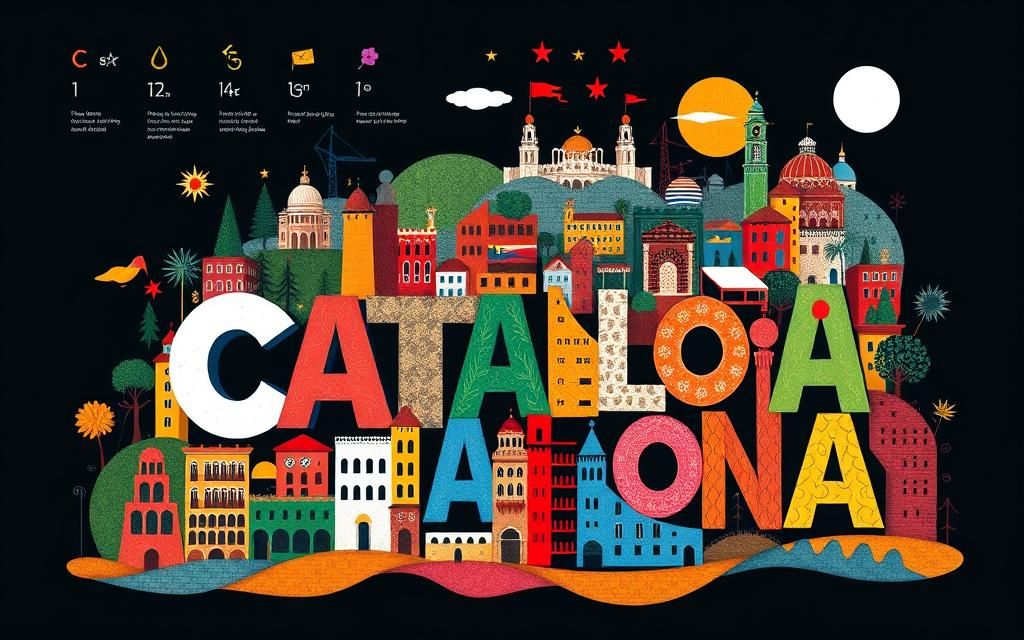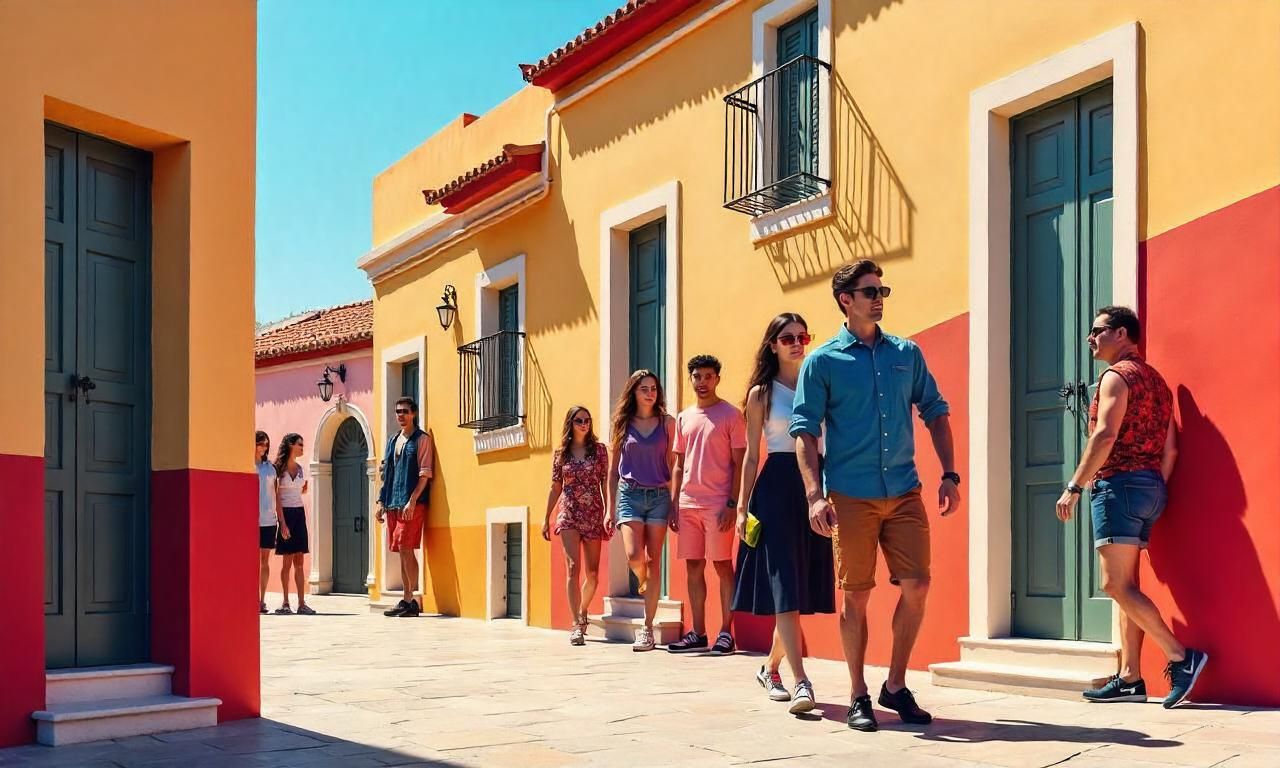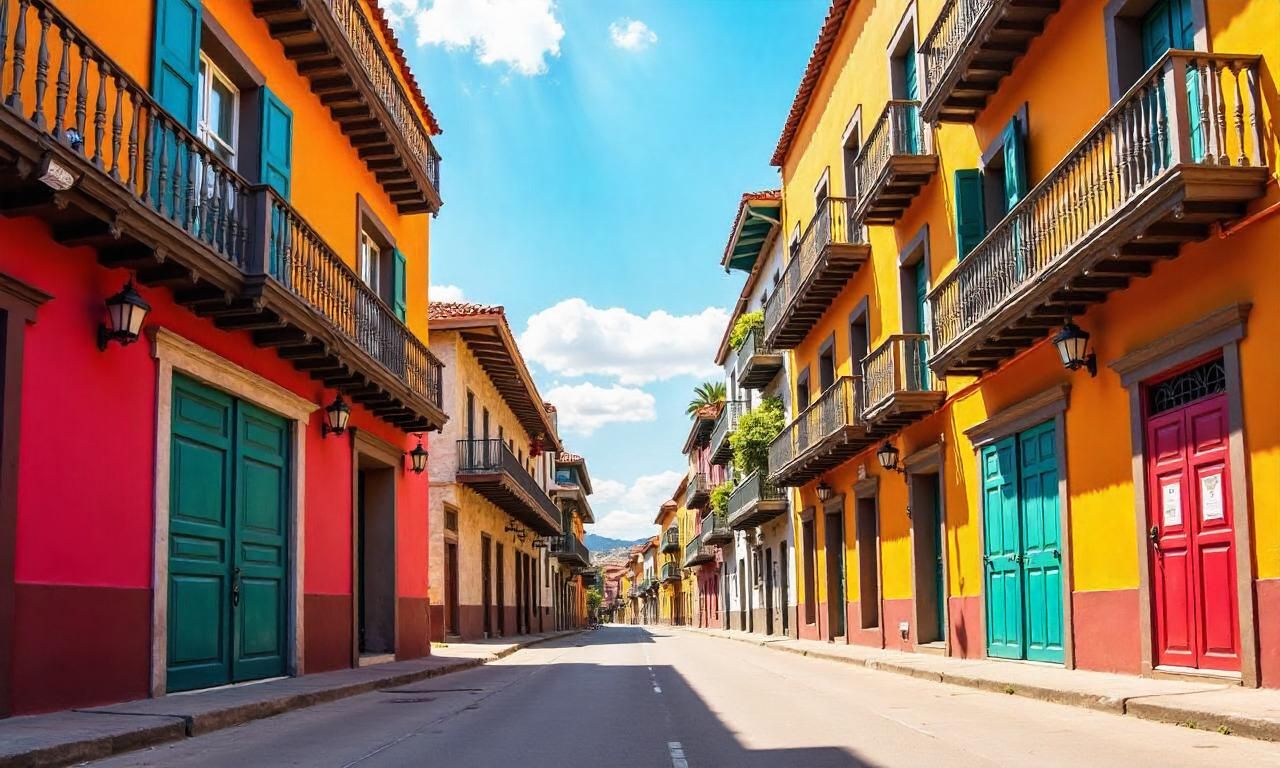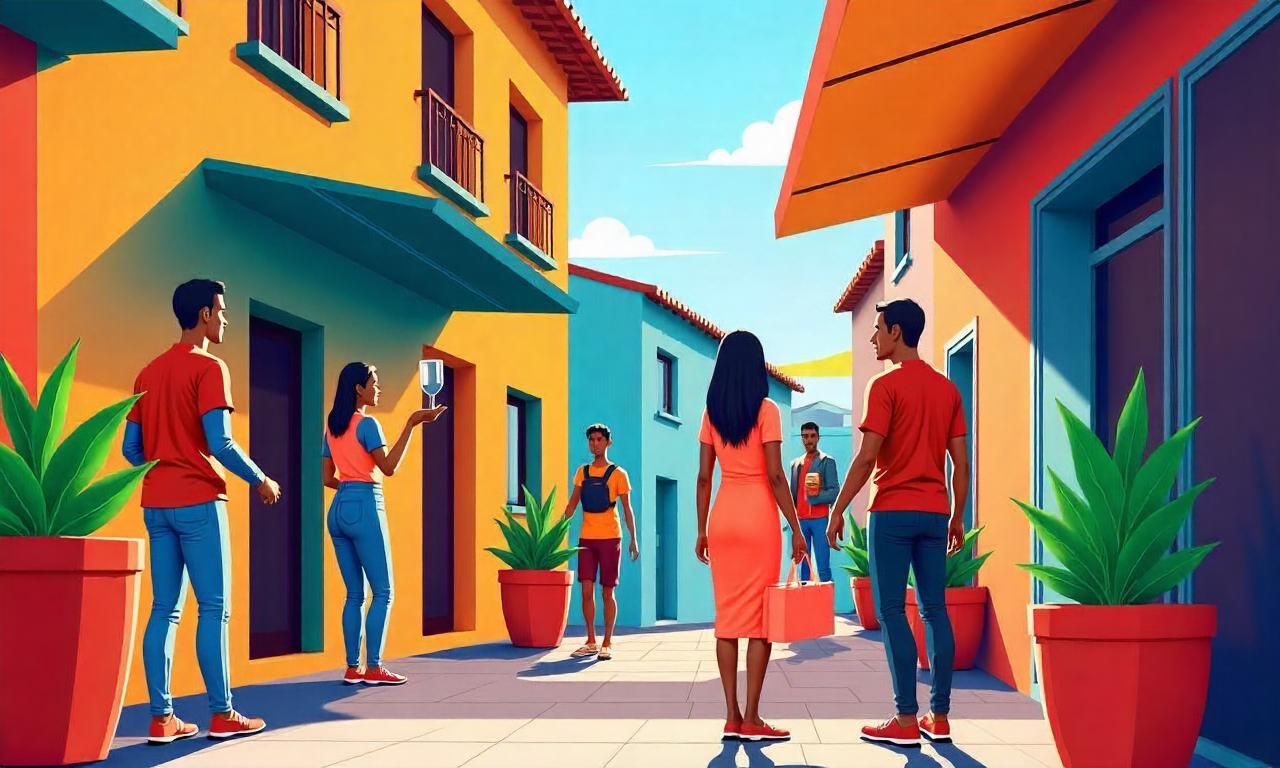Spain is a country rich in culture, thanks to its diverse languages like Catalan and Spanish. Spanish is spoken by most people, over 98.8%, but Catalan is also important. It has over 4 million native speakers in Spain and 10 million worldwide. This article will look at the differences and similarities between Catalan and Spanish languages.
Spain’s language diversity shows its complex history and regional cultures. Knowing the differences between Catalan and Spanish helps us understand Spain’s language richness. It also shows how these languages have evolved over time due to politics and culture.
Table of Contents
ToggleHistorical Background of Catalan and Spanish Languages
The Catalan language has a rich history that goes back to the 8th-10th centuries. It started as a distinct dialect from Vulgar Latin, like other Romance languages in Europe. By the 15th century, Catalan literature was flourishing, showing the language’s power and cultural importance.
A Brief History of the Catalan Language
Over time, the history of the Catalan language has been influenced by politics and culture. In the 15th century, Catalan was strong, but Castellano (Spanish) started to take over. This change continued under Francisco Franco’s rule from 1936 to 1975, when Catalan was banned.
But with democracy in 1975, the catalan language development got a boost. Catalan was made official again, showing the region’s deep linguistic roots and the ongoing catalan vs spanish history.
| Timeline | Key Events |
|---|---|
| 8th-10th centuries | Catalan emerges as a distinct dialect from Vulgar Latin |
| 15th century | Catalan literature reaches new heights, but Castellano (Spanish) gains prominence |
| 1936-1975 | Francisco Franco’s dictatorship suppresses the use of Catalan |
| 1975 | Democracy returns, and Catalan is revived with official status in parts of Spain |
The Evolution of Spanish in Spain
The Spanish language in Spain has changed a lot over time. It has taken in words and sounds from many places and cultures. From the Moorish rule to today, Spanish has always been changing. This shows how lively the Iberian Peninsula is.
When the Moors ruled, Spanish picked up a lot from Arabic. This added new words and changed how words sound. Also, languages like Catalan have shaped Spanish in different areas.
Politics have also changed Spanish. The Franco rule, for example, affected how Spanish and Catalan languages interacted. Now, the push for Catalan independence makes people think about their language again. They are looking at how Spanish and their local languages work together.
Today, Spanish is still changing, with different ways of speaking and the influence of other languages. This makes Spanish rich and varied. It shows how Spanish can adapt and stay strong.
Tracing the History of Spanish in Spain
Spanish started with the Latin spoken by Roman settlers in the Iberian Peninsula. Over time, it took in words and sounds from many places. These include:
- Arabic, during the Moorish occupation of parts of Spain
- Regional dialects and minority languages, such as Catalan, Galician, and Basque
- Political and cultural events, like the Franco dictatorship and the ongoing Catalonian independence movement
These influences have made Spanish a rich and varied language. It has regional differences and a unique sound that keeps changing.
| Influence | Impact on Spanish Language |
|---|---|
| Arabic | Incorporation of new vocabulary and altered pronunciations |
| Regional Dialects and Minority Languages | Adaptation of the Spanish language to reflect local linguistic and cultural identities |
| Political and Cultural Events | Unintended consequences on the relationship between Spanish and other regional languages, leading to a renewed focus on linguistic identities |
The story of Spanish in Spain shows how the language can change and grow. It reflects the diverse culture of the Iberian Peninsula.
Political and Cultural Impacts on Language Development
In Spain, language, politics, and cultural identity are closely linked. The fight for Catalonia’s independence shows how it affects the Catalan language. It makes it a symbol of regional pride.
Language carries cultural heritage and political views. In places like Valencia and Catalonia, the fight for power has shaped language use. This affects how people express themselves and keep traditions alive.
Using Catalan more in public shows its importance to Catalan identity. As Catalans seek more rights, we see how politics affects language. This shows how language is key in showing regional identity and challenging the current situation.
The changing role of language in politics in Spain shows language’s deep connection to culture and identity. It’s not just for talking. It reflects the complex relationship between culture, identity, and politics. This topic gives us insights into how language shapes regional and national stories.
catalan vs spanish culture in spain
Catalan and Spanish have their own histories and cultures. Yet, they share many similarities. This is mainly because they both come from Latin, leading to similar words and grammar.
Shared Vocabulary and Word Origins
Many words in Catalan and Spanish come from Latin. This means that words in both languages often have the same Latin roots. This makes it easier for speakers to connect the vocabularies. It also helps those learning either language.
Common Grammatical Structures
Catalan and Spanish also share grammar structures. They both use the same sentence order and articles. These similarities make learning one language easier for those who know the other.
| Linguistic Feature | Catalan | Spanish |
|---|---|---|
| Word Order | Subject-Verb-Object | Subject-Verb-Object |
| Articles | Definite: el, la, els, les Indefinite: un, una |
Definite: el, la, los, las Indefinite: un, una |
| Verb Conjugations | Similar conjugation patterns | Similar conjugation patterns |
The similarities between Catalan and Spanish come from their Latin roots. This makes it easier for speakers of one language to learn the other. This shared background is useful for those exploring Spain’s language and culture.
Key Differences That Set Catalan Apart from Spanish
Catalan and Spanish share many similarities but have distinct features that make Catalan unique. It has its own spelling, grammar, and pronunciation. Let’s look at what makes Catalan stand out in Spain.
Catalan and Spanish differ in spelling and grammar. Catalan uses a middle dot (·) to separate double Ls, unlike Spanish. It also uses “ny” in nouns instead of “n”. The way Catalan handles vowels and verbs is different too, making it stand out.
Pronunciation is another big difference. Catalan vowels are softer, and final consonants are less emphasized. The “ny” sound is unique to Catalan, giving it a special rhythm.
| Feature | Catalan | Spanish |
|---|---|---|
| Spelling | Use of middle dot (·) for double Ls | No middle dot for double Ls |
| Noun Usage | Employs “ny” combination | No “ny” combination |
| Vowel Sounds | Softer, more muted | Clearer, more pronounced |
| Final Consonants | More muted | More pronounced |
These differences, along with others, make Catalan unique. They highlight its cultural importance in Spain.

Cultural Significance and Usage of Catalan
The Catalan language is more than just a way to talk in Spain. It’s a key symbol of identity for many in Catalonia, the Balearic Islands, and other places where Catalan is spoken. It links people to their deep cultural roots and history. This makes it essential in everyday life, from school to government.
Its importance shows how it’s a cultural and political symbol of regional identity. This is especially true in Catalonia’s fight for independence. Using Catalan widely helps keep the region’s unique identity. It also brings the Catalan-speaking community together.
The cultural importance of the Catalan language is huge. It connects people to their past, keeping alive traditions, customs, and values. By keeping Catalan alive, people in Catalonia and other areas show they value their autonomy and right to make their own decisions.
In Catalonia, Catalan is a big part of daily life. It’s the main language in schools, media, and government. This shows its official status in Catalonia. Using Catalan so much in public life also highlights its role as a symbol of identity and unity for the Catalan people.
In conclusion, the Catalan language is more than a way to talk. It’s a deep expression of the region’s culture. Its role in showing Catalan autonomy and self-determination is huge. The fact that Catalan is used a lot in Catalonia and other places shows its lasting cultural value.
Catalan Influence on Spanish Spoken in Catalonia
In Catalonia, the Catalan language has deeply influenced the Spanish spoken there. This has led to a special dialect called “Catalan Spanish.” It shows how Catalan words and phrases have become part of local Spanish.
Catalan vocabulary has blended into Catalan Spanish. Words and phrases from Catalan now add a unique taste to Spanish in this area. This mix of languages creates a rich cultural scene in Catalonia.
The way people speak in Catalan Spanish also reflects Catalan influence. The way they pronounce words and the rhythm of their speech make it different from other Spanish dialects. This makes Catalan Spanish stand out.
Translations of Catalan idioms into Spanish also show the strong link between the languages. These translations let us see the shared culture of Catalonia and its people.
The impact of Catalan on Spanish in Catalonia shows the area’s rich language diversity. This dialect enriches Spanish and highlights the unique identity of the Catalan people.
Resources for Learning Catalan
Learning Catalan is now easier than ever. Whether you love languages or want to explore Catalonia’s culture, there are many resources to help you start. These resources make learning Catalan fun and effective.
Duolingo is a top choice for learning Catalan. It’s free and uses fun lessons and games. This makes building your vocabulary and grammar skills easy and enjoyable.
The Institut Ramon Llull is another great place to learn Catalan. They offer online courses and language exchange programs. These are perfect for learners at any level.
If you want a deeper learning experience, consider Catalan language courses at universities. These courses give you a strong foundation in the language and let you explore Catalan culture.
Outside the classroom, there are many Catalan-language podcasts, YouTube channels, and TV shows. These can help you improve your listening skills and get used to hearing the language in real situations.
LanguageXS also supports Catalan speakers with interpretation and translation services. This makes communicating in Catalan easier, no matter where you are.
Whether you’re just starting or want to get better at Catalan, there are many resources to help you. Jump in and discover the beauty of this language.
| Resource | Description | Accessibility |
|---|---|---|
| Duolingo | Free language-learning app with interactive Catalan lessons | Available on mobile devices and web |
| Institut Ramon Llull | Leading organization promoting Catalan language and culture, offering various learning materials | Online resources and programs |
| Catalan Language Courses at Universities | Academic programs providing a strong foundation in the Catalan language | Available at universities in Catalonia and abroad |
| Catalan Podcasts, YouTube Channels, and TV Shows | Media resources for immersive language learning and cultural exploration | Accessible online and through various platforms |
| LanguageXS | Provides over-the-phone interpretation and online translation services for the Catalan-speaking community | Available for phone and online services |
Mastering Catalan takes practice and immersion. Check out these resources and dive into Catalonia’s culture. Good luck with your learning!
Conclusion
Exploring Spain’s languages has shown us the big differences between Catalan and Spanish. Both languages come from Latin, but Catalan has its own special words, rules, and way of speaking. This makes it different from Spanish.
Catalan is important as a symbol of local identity. It has been shaped by politics, making it crucial to understand its role in Spain. This shows us the value of having many languages in a country. It helps us see the rich culture and the importance of keeping different languages alive.
Looking into Catalan and Spanish in Spain has been an exciting journey. We’ve seen how to learn Catalan and its impact on Spanish in Catalonia. This journey has made us appreciate the many languages of this lively country more. We hope that keeping Catalan alive and valued will continue. This way, its unique language and culture will be celebrated for many years.
FAQ
What are the official languages spoken in Spain?
Spain is a multilingual nation. Over 98.8% of its people speak Spanish. It also has four official languages: Euskara, Catalan, and Galician.
How many native speakers does Catalan have in Spain and worldwide?
In Spain, Catalan has over 4 million native speakers. Worldwide, it reaches 10 million people.
When did the Catalan language emerge?
The Catalan language started to form in the 8th-10th centuries. It came from Vulgar Latin, like other Romance languages.
How was the use of Catalan impacted during the Franco dictatorship?
Francisco Franco banned Catalan from 1936 to 1975. After democracy came back in 1975, Catalan’s use was revived. Now, it’s official in some parts of Spain, alongside Spanish.
How has the struggle for Catalonia’s independence influenced the Catalan language?
The push for Catalonia’s independence has made people use Catalan more in public life. This shows its importance as a symbol of regional pride.
What are some key similarities between Catalan and Spanish?
Catalan and Spanish share a lot of words from Latin and similar grammar. They both use the subject-verb-object order and definite and indefinite articles.
What are some key differences that set Catalan apart from Spanish?
Catalan has its own spelling and grammar, like the middle dot for double Ls. It also has unique vowel and verb endings. Pronunciation is different, with softer vowels and unique sounds like “ny” not found in Spanish.
How can one learn the Catalan language?
You can learn Catalan with online courses and apps like Duolingo and Parla.cat. The Institut Ramon Llull also offers resources. Universities in Catalonia and abroad have courses. Podcasts, YouTube channels, and TV shows in Catalan can also help with learning.















